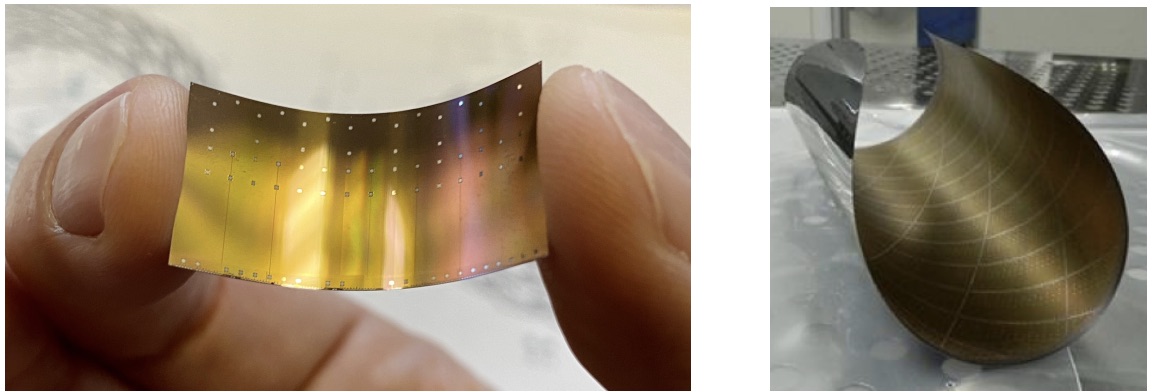
ALICE’s current Inner Tracking System, installed for the ongoing LHC run, is the world’s largest pixel detector to date, with 10m2 of active silicon area and nearly 13 billion pixels. The new Inner Tracking System, ITS3, builds on the successful use of monolithic active pixel sensors and takes this concept to the next level.
“ALICE is like a high-resolution camera, capturing intricate details of particle interactions. ITS3 is all set to boost the pointing resolution of the tracks by a factor of 2 compared to the current ITS detector,” said Alex Kluge and Magnus Mager, the project leaders of ITS3. “This will strongly enhance the measurements of thermal radiation emitted by the quark-gluon plasma and provide insights into the interactions of charm and beauty quarks when they propagate through the plasma.”
The ITS3 sensors are 50 µm thick and as large as 26×10 cm2. To achieve this, a novel stitching technology was used to connect individual sensors together into a large structure. These sensors can now be bent around the beampipe in a truly cylindrical shape. The first layer will be placed only 2 mm from the beampipe and 19 mm from the interaction point. It can now be cooled by air instead of water and has a much lighter support structure, significantly reducing the materials and their effect on the particle trajectories seen in the detector.
Documents: |
Project Leaders: Alexander Kluge (CERN) and Magnus Mager (CERN) |

